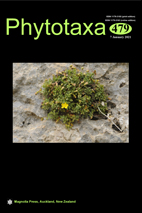Abstract
A new species of the genus Camellia L. (Theaceae) from Southern Vietnam is described and illustrated under the name Camellia proensis. Morphological differences between C. proensis and closely related species in the genus Camellia L. (sect. Piquetia) were identified. C. proensis is easily distinguishable from C. honbaensis, C. piquetiana and C. longii by the yellow flowers; from C. dalatensis by the glabrous twigs and leaves; from C. dongnaiensis by light yellow flowers; from C. sonthaiensis by mature fruit flat-globose, 4.0–5.5 cm tall and 8.5–10.0 cm wide. Ecological environment and distribution were also provided for this new species. The images and type specimens of this species were processed and stored in Vietnam (holotype, isotypes, DLU).

